Tosh Berman's Blog, page 188
December 21, 2015
"Los Angeles's Central Avenue Jazz" by Sean J. O'Connell
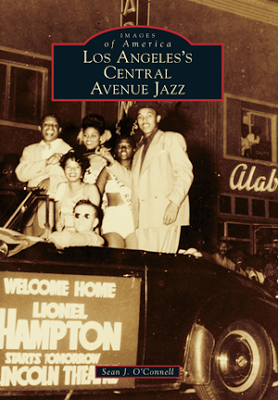 978-1-4671-3130-8 Arcadia Publishing"Los Angeles's Central Avenue Jazz" by Sean J. O'Connell (Images of America series, Arcadia Publishing)
978-1-4671-3130-8 Arcadia Publishing"Los Angeles's Central Avenue Jazz" by Sean J. O'Connell (Images of America series, Arcadia Publishing)My beloved hometown Los Angeles is the best. On the other hand, I don't think I have ever been to Los Angeles. Even though I was born, and lived here for my entire life. For instance, I never been to Central Avenue. I have been to Silver Lake, Echo Park, Santa Monica, Brentwood, Beverly Glen, Topanga, the San Fernando Valley, Century City, Culver City, and on two occasions, Long Beach. But that's not Los Angeles. Central Avenue, to me, is a mystical location for Black American jazz culture. I never was there, but my dad pretty much hung out at all the dance and jazz clubs in that area when he was a teenager and a young adult.
I know of Central Avenue's music history, because it is truly a great one. There are a handful of books on the subject matter, but I just came upon "Los Angeles's Central Avenue Jazz" by local historian Sean J. O'Connell and published by the always fascinating Arcadia Publishing. Minimal text, but no wasted words here. Most of the text are to describe photographs, playbills, announcements and advertising from that great era in South Los Angeles. This book is truly a remarkable resource for that era through these visual images. There are some stuff that O'Connell misses, I think he's totally focused on Jazz music, for instance my dad Wallace Berman did the artwork for Dial Records (Charlie Parker's label) and also an interesting narrative that took place regarding John Dolphin, who owned and ran various small record labels at the time, as well as having a record store on South Central Avenue called "Dolphins of Hollywood." "Hollywood" being used to bring some glamour to the place, but alas, the interesting thing that happened was that Dolphin was shot and killed in his shop by a disgruntled songwriter. Not only that, but it seems that current Beach Boy and surf rock great Bruce Johnson was there and he witnessed the crime. This specific information or text, is from a photograph of one of Dolphin's labels, with the song "Two Step - Side Step" written by Murry Wilson. Yes, the father of Brian, Carl, and Dennis Wilson. So there is even a Beach Boys reference to Central Avenue. Not noted by the author, but me recognizing Wilson on the label.
Beyond that, this is a remarkable and well-researched little book on this great era in Los Angeles. Great images of jazz greats such as Charlie Parker, Gerard Wilson, Art Farmer, Lucky Thompson, and other great iconic figures throughout the book. Special mention of female jazz players as well. "Los Angeles's Central Avenue Jazz' is pretty much an essential book for the jazz lover, but also anyone who is interested in Los Angeles culture. I love it.
Published on December 21, 2015 12:09
December 20, 2015
The Sunday Series: Sunday December 20, 2015
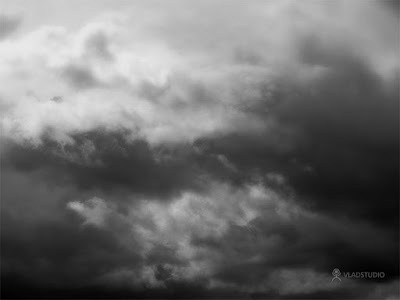
The Sunday Series:Sunday December 20, 2015
My depression is starting to bore me. I keep waving my arms above my head to ward off the dark cloud that seems to be around me at all times. I’m actually a bit shocked that others don’t see this cloud. Perhaps they are just being polite. Or maybe they are mistaking it as my hat. If you’re looking at me from a great distance, one may think it's a hat.

Since my days are numbered why not go to the most expensive restaurant in town. I notice that food or beverages doesn’t have any taste anymore. Is it just me, or is it just a total texture thing now? Visually, seeing the food in front of my face makes me happy, but once I put the ingredients in my mouth, it is almost a crushing disappointment. One would think that a beautiful warm piece of apple pie from here would taste what it looks like. But it seems to be cardboard, and not good tasting cardboard mind you. The only taste I have in my mouth is for the pretty waitress who served me a vodka dry martini with olive. The thought of her actually makes me feel drunk, where the drink itself, is basically nothing. No effect on me at all. It is like I have a fortification within me, and nothing gets through the wall. The only thing that gives me any pleasure is the thought of a glory hole in this wall. Alas, it is nothing, just a thought.
After dinner, I wander out to Park and Sunset Blvd. I waited for the 603 line to take me home on the corner of Alvarado and Sunset. It seems like any other evening in my life. It is very hard to see the stars from the bus stop, oh I don’t know why? Perhaps due to the street and building lighting. Then I remember, there are no stars when there are clouds. My bus approaches and I get in. I use my TAP card, and go sit in the back of the bus by the window.
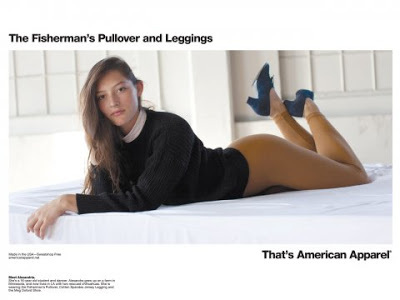
I like to watch the buildings and structures go by as the bus moves forward. The one thing I have noticed is the difference between the Dov Charney billboards and the one’s after he was fired from his company “American Apparel.” They are still sexually enticing, but not as nasty and dirty as under his personal supervision. I often believed that he himself took these photographs of slightly underage girls, perhaps in a studio, but in my mind, they are taken in his home. The awfulness of his vision of young girls wearing his clothing is shameful. Yet, that is why I was attracted to his images on the billboard in the first place. Now, they sort of look like his work, but declawed to a certain degree. Perhaps it's justice or karma of some sort. In all honesty, he sort of ripped the images of Terry Richardson's portraits of women. That is the nature of the advertising world. One takes an image from another place, and just put your brand on it. It’s like cattle rustling in the wild west. You find a cow roaming freely, and you capture it, and put a hot brand on its skin. You now own the property that is branded. Charney’s aesthetic or brand image is totally immoral, which a dirty image should always achieve to be as -something shameful. Oddly enough, it is his images of women that break through my heavy fog that encompasses me.
The woman on the billboard disappears, and then it’s one warehouse after another. The landscape becomes blank, which is dangerous, because this is where I project the images from my head onto the dark landscape. Dark feelings turned into abstract shapes. The warmth of the bus, just reminds one how cold it is outside the vehicle. I leave the bus, turn my collar up and walk to the house. I enter and think “ It’s a Sunday, like all other Sundays. Oh bloody hell Sunday. ”
Published on December 20, 2015 12:27
December 17, 2015
"Because She Never Asked" by Enrique Vila-Matas (New Directions)
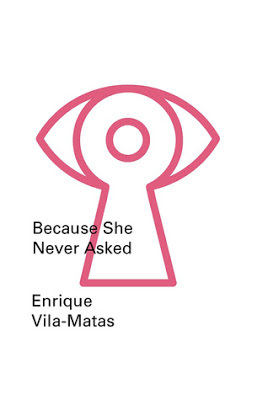 978-08112-2275-4 New Directions
978-08112-2275-4 New Directions"Because She Never Asked" by Enrique Vila-Matas (Translated from the Spanish by Valerie Miles)
Once every little wile, I come upon a writer who has exactly the same concerns as yours truly. In fact, I at times, feel like I wrote his books. Enrique Vila-Matas is my favorite living author. If he died, he would be my favorite dead writer. I like him because he writes about writing. Most, if not all (I haven't yet read everything by him) deals with the literary world - sometimes the by-products of writing, but also the social life of a writer. This short novella "Because She Never Asked" deals with the author's relationship with the French conceptual artist Sophie Calle. Throughout the narrative he tries to start-up a project with her, where reality springs out of literature.
A writer pretty much works in their head, and then on the writing tool of their choice. Here he has a chance to write literature and have it come to life. This, becomes a major conflict in the narrator's life and work. The beauty of this book is his commentary on the nature of writing, and how that in turn, becomes a piece of work. For me, and with my writing, I fully understand Enrique Villa-Matas' concerns and worries. The fact that the book's second character of interest is Calle is an additional plus, and a tribute to her own work, which is often obsessive, secretive, and a touch of danger. A wonderful book.
Published on December 17, 2015 11:13
December 16, 2015
Best New (for me) Music in 2015 (while writing of course)

Like the 21st century itself, 2015 is a bit of a disaster and some success as in hand-in-hand, as they walk down the yellow brick road. As I write or try to compose words on a page, I listen to music while I work. There is music that is used as background, so I can just focus on the page on hand. There is a dreamy aspect of composing a narrative, where I need to look out the window or against the wall, and project my thoughts on to it, like it was a blank movie screen. Music is very much a tool as well, and I need it to take me from one place to another. What I’m going to do here is list albums or music I heard in 2015. Do keep in mind not all of this is new music, but at the very least, new to me. Even, more important, its music I have used to compose words on a computer screen. Therefore this is not vinyl, but MP3s or streaming through Apple Music. In no special order:
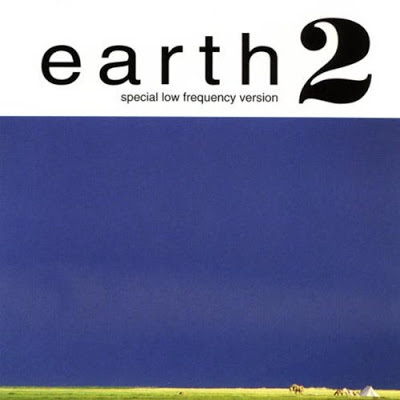
Earth : “Earth 2”
The drone has become my favorite sort of music to work within the background. Sheets of sound allow me to think clearly and quite freely. The music does set a mood, and I tend to like to hear the noise that is dark, and if it was an object, something that floats in the air. The band Earth’s “Earth 2” is such an album for me. With only three songs, that lasts over an hour. I’m put into a small cocoon or perhaps in a water tank, and I’m just floating on the sounds off this album.
“Earth 2” was recorded in Seattle for the Sub Pop record label in 1972, and released on February 3, 1993. The instrumentation is Dylan Carlson on guitar and Dave Harrell on bass. Joe Burns plays percussion on one cut. The sound one hears is basically the guitar and a very low bass sound. I think to get its full effect, one needs to play the record/music extremely loud, but for my purposes, mid-level volume is perfectly OK. The thing I like about drones or even so-called minimal music, is that I start hearing things that I don’t think is actually on the disk or in the music. I can also shut it off for whatever I’m focusing on, but if I do focus on just the music, I can really hear things over the layers of sound. Although, by my nature, I’m not a spiritual person, yet, listening to the last track on this album, I’m sent off to another world. It is not that far from the Fripp & Eno world. Almost the younger brother of those recordings.
The beauty of the album, even though it has three songs/tracks, it never breaks between songs. It is one large piece that keeps going on and on. At a certain point, I lose all track of time, which is great while writing.
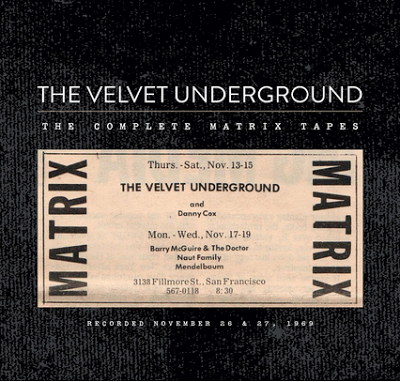
The Velvet Underground “The Complete Matrix Tapes"
Four CD disc-set from a series of shows at the Matrix club in San Francisco in 1969. Is there even doubt, that The Velvet Underground was from the beginning to the end, the greatest live band ever? The Matrix tapes convey a band that is driven, willing to take chances, and brilliant inter-playing among the musicians. The 36-minute version of “Sister Ray” is simply awesome. These series of shows expose the tightness of the band, but also their natural groove. Not only song orientated (which of course, these are an amazing set of songwriting genius godlike perfection in motion) but groove moving as well. Maureen Tucker is truly a great drummer and the interaction between Reed and Sterling Morrison is like the Kray twins in action. Doug Yale, the guy who replaced John Cale is a musician who is left out of the godlike genius category, but he’s so superb in this band. Hypnotic trance like in one moment and then the heart breaking aspect of the lyrics. It is just a great cocktail of noise, sound, and melody. Lou Reed’s singing is also noted, as brilliant.
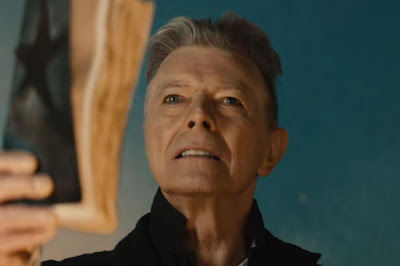
David Bowie : “Blackstar” (single)
The video to this song is a distraction. It’s good. But not as brilliant as the song. Ten-minutes long, like the band Earth, time is totally destroyed while listening to this record. “Blackstar” starts off as a North African riff, and it becomes a hypnotic rhythm with Bowie’s voice singing a hymn to what appears to be darkness. The sax comes and goes throughout the song/mix, and the listener is crawling in the desert, somewhere out of Marrakech. Then the song drifts into a beautiful R & B melody, and gets into a gritty groove, then gets back in the trance of North African sound. Along with Sparks, Bowie is the only artist who can make the old sound totally new. This is a gorgeous record.
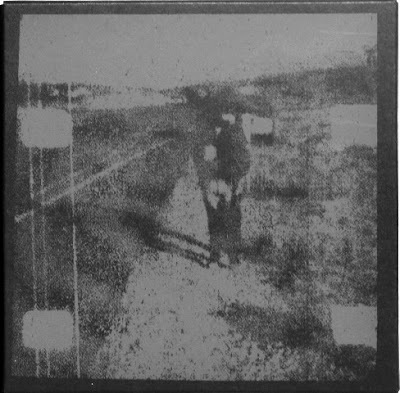
Lee Ranaldo : “Ambient Loop for Vancouver”
Along with Alan Licht on guitar, Christian Marclay on turntables, and William Hooker on drums, Lee Ranaldo adds his touch on guitar and I presume the concept behind this beautiful and even quasi-spiritual work is a meditative hardcore listen. I find this recording perfect for zoning out and using it as a writing tool of sorts. My only comparison (like “Earth 2” above) is Fripp & Eno’s “Evening Star” album. It’s a wash of electronics and clearly guitar sounds, with the brilliant Marclay adding sonic textures or samples.
Oddly enough, this is my first Lee Ranaldo recording. As of this time, I’m not that familiar with his solo work, only his Sonic Youth recordings. I think I prefer this album than to the whole Sonic Youth catalog. Probably more to my mood and needs at the moment, but I wish I had an expensive sonic set-up with speakers in every room of this house, so I can play this album at full-volume. The mixture of organic sounds (a siren here and there, but muted as well as vinyl sounding recordings) with the dreamy electronic hums of the guitars is truly beautiful. It also reminds me, in parts, The Beatles “Revolution No. 9.”
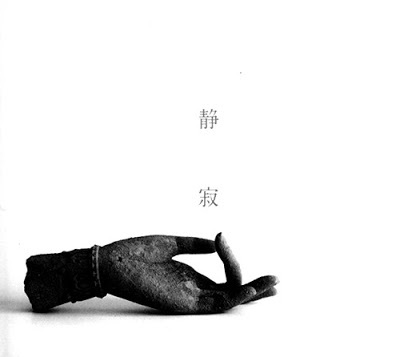
Keiji Haino, Mitsuru Nasuno and Yoshimitsu Ichiraku - “After Seijaku”
As I was wandering around the Japanese rock section of Tokyo’s Tower Records, I came upon this album. The packaging was minimalistically fantastic, and I really wanted to hear new Japan based music. Another zone-out piece of genius work for me. This, I think works best as headphone music, because I played it over my speaker, and didn’t like it as much. The music is best when self-contained in a small area. That area that is between the two ears.
This double-cd set was recorded by Keiji Haino (electronics, voice, guitar), Mitsuru Nasuno (bass, electronics) and Yoshimitsu Ichiraku (electronics). A live recording, but you could fool me. It sounds like it was made in a very cold freezer, with air being pumped in. Recorded almost exactly a year ago, this is a beautifully layered sound of electronics coming in and out like a wave in the ocean. One can call it ambient, but the sounds are more forceful, and really grabs one’s attention. Each CD is about 60 minutes long, so a perfect zone-out time to listen, and reflect. Seijaku is truly a great music listening experience.

Sparks - “The Final Derriere” (From “The Forbidden Room”)
The genius of Sparks (and they are truly in that bracket) is how they can convey something like the obsession of women’s asses, and yet, makes it into a moving almost “I’m in tears” type of pop song. Written for Guy Maddin’s new cinematic masterpiece, this is a stunning piece of work The over-layered vocals by Russell Mael conveys the sadness of one man’s obsession, and is hoping that he’s reaching the final destination : the last derriere. Or butt. But one sense that this will not happen, even with the brain surgery to cure the ‘disease. Sparks is very much like a silent film, where the hero, in a comical manner, is acting funny, but actually dealing with a serious issue. The balance between pathos and humor is very much in the works of Sparks. “The Final Derriere” is a song that bites, but leaves a sense of sadness as well.
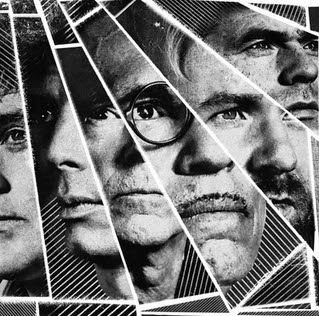
FFS - “FFS”
For fuck’s sake, it’s Franz Ferdinand and Sparks making an album together! Every song on this album is so catchy and pop-tific that it seems like a hit & run crime. It is a throw-back to an era when pop music used to be profound, catchy, and very commercial. But it seems that wit has left the building and we’re left with the dreck of the 21st century. FFS is the window of opportunity coming in brash sunlight. 16 brilliant pop(alar) tunes to make the listener float, tap their feet, and sing along. When Russell is not singing magnificent lead, he backs up Alex’s voice as if he is like Ali throwing punches at Sonny Listen. He taunts him, leads him, and due to that, Alex as a singer really shines on the album. To my ears, this is basically a Sparks’ album with assistance from Franz. The one stand-out track from Alex is “Little Guy from the Suburbs” which is based on Jacques Mesrine’s narrative.
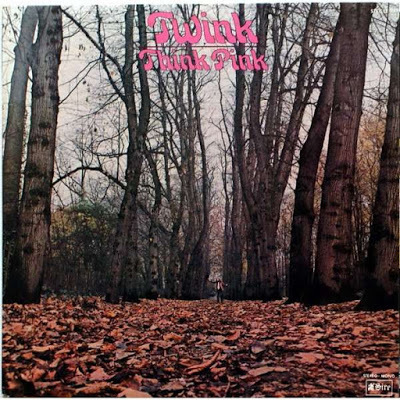
Twink - “Think Pink”
For at the very least, I have heard of Twink, the drummer. The impression I got was that he may be a cult version of Keith Moon. Due to the Apple Music app, I finally heard his first solo album he made in 1968, called “Think Pink.” My impression is that this album will be sort of the drummer’s solo album, where friends would jam on very long tracks. The truth is a bit different. It’s very 1960s, and British underground(ish), but also tuneful and very pop as well. This is not a messy solo album by a band member, but a strong statement of musical independence. I’m shocked at myself for not picking up on this album years ago. With a name like “Twink, ” how can it be possibly bad - especially when the album is called “Think Pink.”
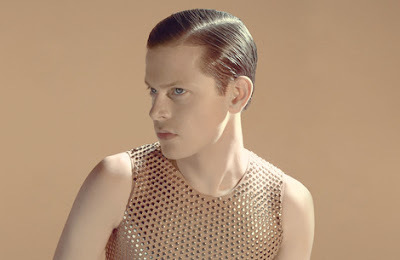
Perfume Genius - “Too Bright”
Listening to this album, I feel like I’m listening to David Bowie’s “Hunky Dory” when it originally came out in 1972, and I know Perfume Genius’ next album will be his Ziggy. Till then, I have been listening to this album almost non-stop for the whole year of 2015. The melodies are so beautiful, and this ‘twink’ of a young man (I think he’s in his 30s?) is a brilliant updated glam pop star. He clearly understands the language and history behind it all, and the surprise thing that this is not nostalgia, but a forceful look at today’s concerns and life. “Too Bright” should have been no. 1 in every part of the world - with “Queen” being the national anthem of my state of the country as well as yours. This album is exciting to me, because I feel we’re going to hear a lot of great music from Perfume Genius from years to come.
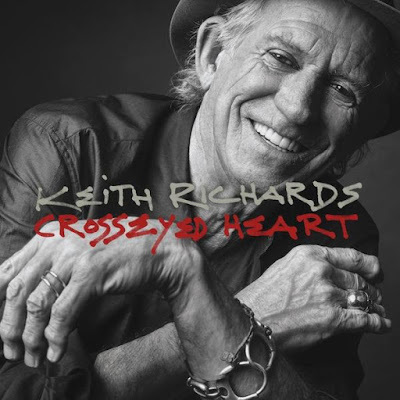
Keith Richards - “Crosseyed Heart”
Since it’s 2015, it would make perfect sense for me to stay away from anyone in the Rolling Stones who is doing a solo album. Especially Keith, because he kind of pissed me off with his very selective memory of a certain Brian Jones that was in the Stones - and the fact that the band is basically hardcore Corporate Rock, but alas, his new solo album is wonderful. “Heartstopper” is a great song with a fantastic melody. And there are more superb songs on this disk. In an odd way, it reminds me of later Serge Gainsbourg. He will never out master the master that’s Serge, but he also shares a timeless quality. There are dandy touches here and there, and the production by Steve Jordan is over-all superb. A surprise hardcore like for me.
Tosh Berman
Published on December 16, 2015 17:57
December 15, 2015
"Sinatra: The Chairman" by James Kaplan
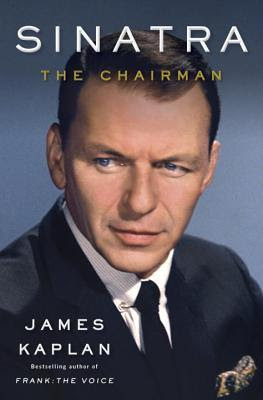
"Sinatra : The Chairman" by James Kaplan (Doubleday)
A horror story. I couldn't stop reading this biography, and it is over 800 and something-like pages, and it strikes me as the ultimate American tale, and as its nightmare. Frank Sinatra, without over-stating, is without a doubt a great figure in American culture. He is also a monster. Nevertheless, a truly great pop(ular) artist who can cut through the bullshit by just singing. It is when he's not singing is when trouble lurks like a bad disease.
I read James Kaaplan's first volume, "Frank: The Voice, ' with incredible pleasure. What made the book sing out so greatly was Kaplan's ability to capture the early years of Sinatra and make the reader understand the world that he lived in, and the life of a big band vocalist. Also the author has a firm grip on the music itself, so it wasn't all just punches, drinking - there was also the music aspect of Sinatra's life. "Sinatra: The Chairman" is like an everlasting hang-over that never gets better.
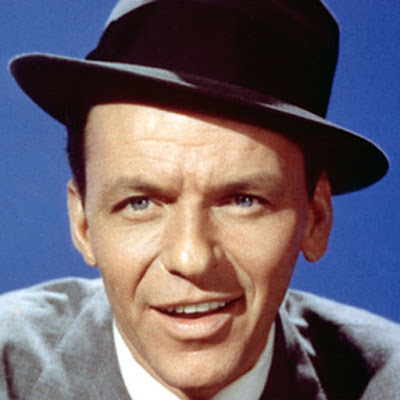
It is interesting how Kaplan entitled these two parts of the biography. "Frank: The Voice" is very much an intimate read on one's music and character. He used the first name, and also brings up the subject matter of his instrument of choice - the voice. The second volume is his family name "Sinatra" and it is about power "The Chairman." And for me, this is what I find both interesting and troublesome about the second volume. First of all, I don't feel like it's the author's fault. I think the publisher or editor should have made this biography into three separate volumes. The early years (The Voice), then perhaps a book on the rest of the 1950s to the 1960s - and then perhaps the last volume could focus on his aging life. The thing is with Sinatra you can make just a book just on his relationship with the Mafia/Kennedy, or one focusing on his films, and it would be a fascinating individual read.
After reading "The Chairman" I feel like I was in a boxing match with Sinatra. This is a man who gave as well as obtained pain for himself. Not a long death mind you, but for sure he's a soul who got beaten up over and over again. I can't feel sorry for him, but I also feel really tired after finishing this book. It is sort of like taking care of a sick relative and they're driving you crazy, even though you love them. Frank Sinatra, was a total creep. A nice creep at times, and he had the moves of a person who had the social grace. But like someone who experiences life as if someone turned off and on the lights in one's house, he must have been a dangerous man to hang out with.
For me, when I listen to a classic Sinatra album, I'm totally lost in what he's saying to me at that moment when the needle hits the vinyl or I push the button on the CD player, or on my computer. He is one of the few singers, that I have to stop everything to listen to hm. His dictation or voice makes me follow the lyrics. He is probably one of the great American vocalists, where the lyrics are front and center. It is never lost in the mix of the recording. The wording is so important to his aesthetic. He had taste, and he understood the concept of the recording, so therefore he had a vision as well. This has nothing to do with his cruelty in his private life whatsoever. Nor do I think it has anything to do with his personal relationships. He comes upon a song, and bingo, he can express the full emotional aspect of that piece.
When I hear a Sinatra recording, I'm not thinking of the Mafia, his women, or anything in his life. I'm listening to someone who can articulate a certain joy or pain, that I can easily identify with. As a listener, I can't imagine myself as a jet-setting playboy, but I too know the stings and joy of love, and that is what is so masterful regarding Sinatra's talents. The noise of his private life is just that, noise. Of course, he had a fascinating life. The media is so psychotic and Sinatra had the misfortune (or talent) to feed that engine that never tired.
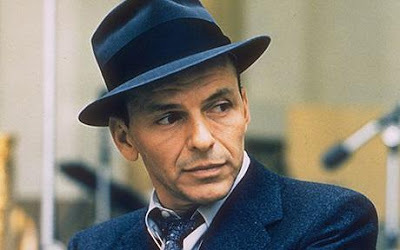
The problem of dealing with Sinatra's 100th birthday is that we are kind of forced to take his whole package. Therefore we can comment on his lifestyle and cruelty, and that somehow makes his art less appealing. Which is understandable, but the fact is he was a fantastic participant in record / music making, and that is what we should remember him for. The mid-life crisis that is the Rat Pack, his moronic relationship with certain girlfriends and male friends alike - all are interesting. But when I play a good Sinatra record, I totally forget all of that, and fall into the mist or landscape that is a combination of magic and vision. Sinatra had the ability to transform the listener, and that is what I like to remember him by.
"The Voice" and "The Chairman" is surely the last of the biographies on this gigantic figure. If you want to know who this man is, was, and his role in pop culture, these books will lead you to that path. On the other hand, I would recommend the Capital and some of the Reprise label material, that really addresses his importance to pop culture.
- Tosh Berman
Published on December 15, 2015 10:17
December 14, 2015
"June 1, 2014" DC's List of the Best in 2015
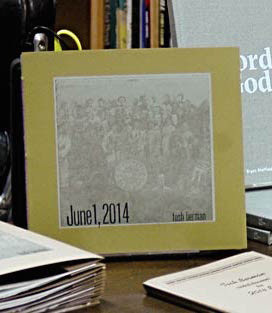
It is with great honor to have my "June 1, 2014" among other great pieces of literature, music, film and art on Dennis Cooper's superb blog - celebrating the best of 2015. See my title, but even more important, such a great reading list of works that were done in 2015: http://denniscooper-theweaklings.blogspot.fr/2015/12/mine-for-yours-my-favorite-fiction.html?zx=f6b512d3df1c9b75
Published on December 14, 2015 15:56
100 Books I Read in the Year 2015 by Tosh Berman (all reviewed in Good Reads)
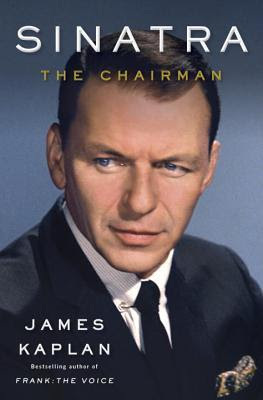 James Kaplan (Doubleday)
James Kaplan (Doubleday)
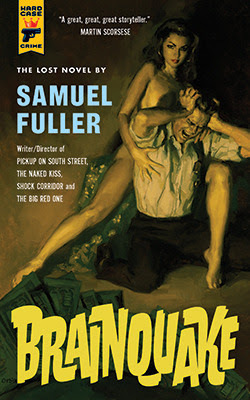 Samuel Fuller (Hard Case Crime)
Samuel Fuller (Hard Case Crime)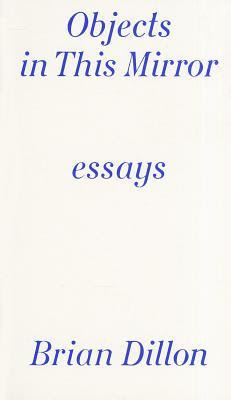 Brian Dillon (Sternberg Press)
Brian Dillon (Sternberg Press)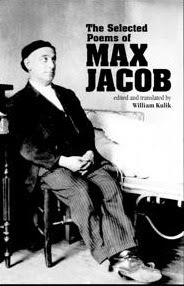 Max Jacob (oberlin)
Max Jacob (oberlin) Sarah Gerard (Two Dollar Radio)
Sarah Gerard (Two Dollar Radio)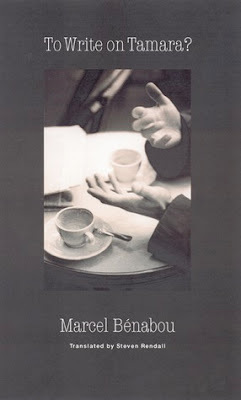 Marcel Bénabou (Bison Books)
Marcel Bénabou (Bison Books)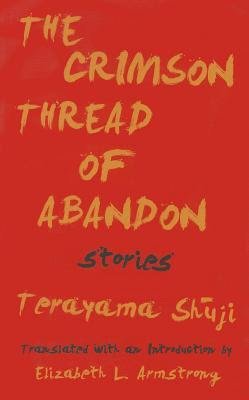 Terayama Shūji (Merwin Asia)
Terayama Shūji (Merwin Asia)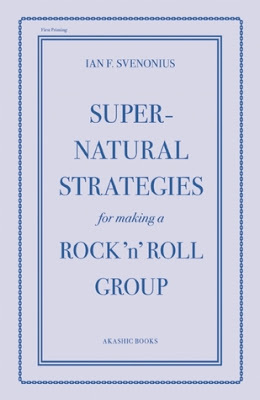 Ian F. Svenonius ( Akashic Books)
Ian F. Svenonius ( Akashic Books)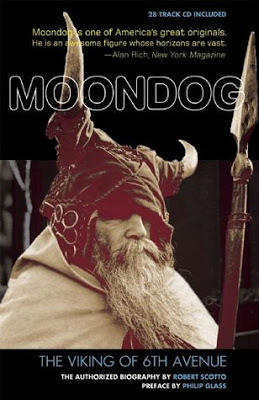 Robert Scotto (Process)
Robert Scotto (Process)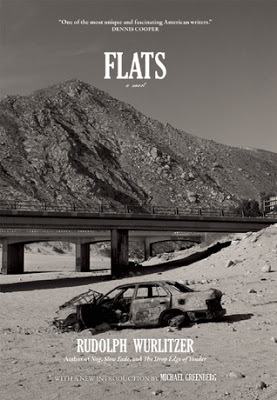 Rudolph Wurlitzer (Two Dollar Radio)
Rudolph Wurlitzer (Two Dollar Radio)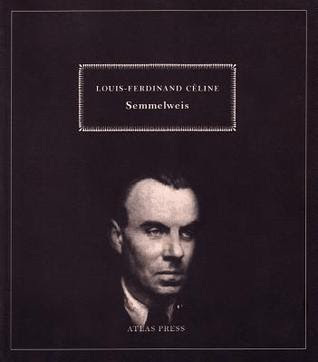 Louis-Ferdinand Cèline (Atlas Press)
Louis-Ferdinand Cèline (Atlas Press) Honore de Balzac (Wakefield Press)
Honore de Balzac (Wakefield Press) O. Nicolai & J. Wenzel (Spector Books)
O. Nicolai & J. Wenzel (Spector Books)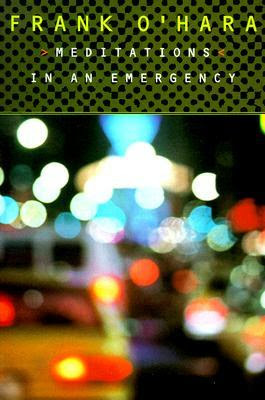 Frank O'Hara (Grove Press)
Frank O'Hara (Grove Press) Georges Ribemont-Dessaignes (Wakefield Press)
Georges Ribemont-Dessaignes (Wakefield Press)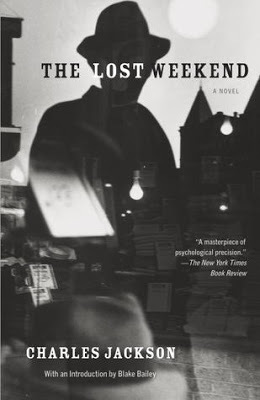 Charles Jackson (Vintage)
Charles Jackson (Vintage)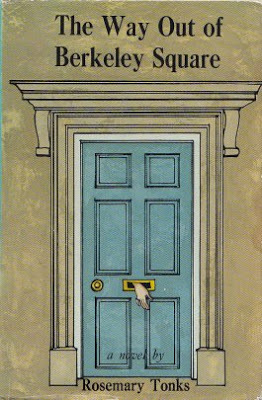 Rosemary Tonks
Rosemary Tonks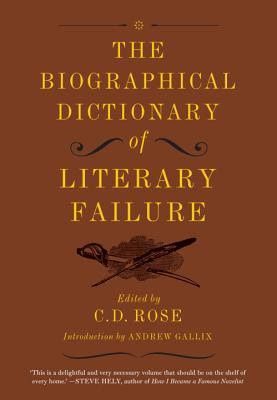 C.D. Rose (Melville House)
C.D. Rose (Melville House)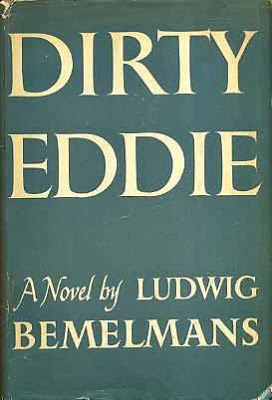 Ludwig Bemelmans
Ludwig Bemelmans Glyn Johns (Blue Rider Press)
Glyn Johns (Blue Rider Press)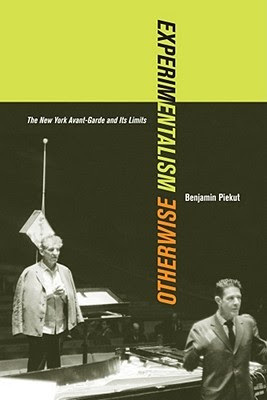 Benjamin Piekut (University of California Press)
Benjamin Piekut (University of California Press) Mark E. Smith (Penguin)
Mark E. Smith (Penguin)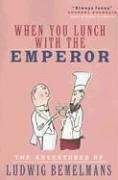 Ludwig Bemelmans
Ludwig Bemelmans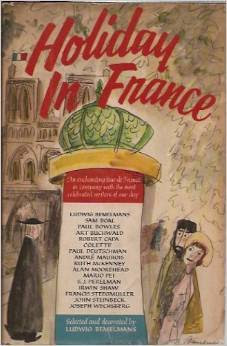 Ludwig Bemelmans (Viking)
Ludwig Bemelmans (Viking)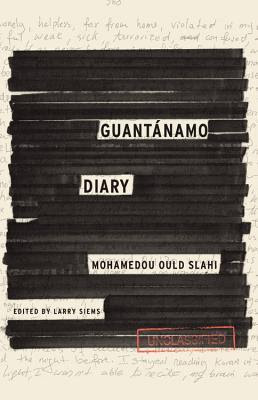 Mohamedou Ould Slahi (Little Brown Press)
Mohamedou Ould Slahi (Little Brown Press)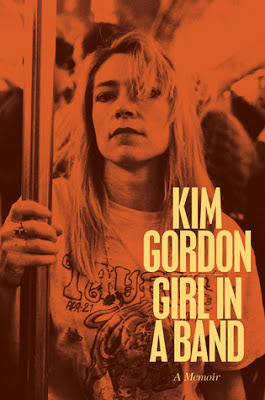 Kim Gordon (Dey Street)
Kim Gordon (Dey Street)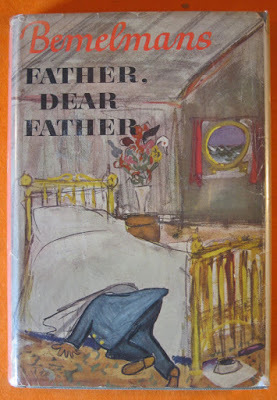 Ludwig Bemelmans (Viking)
Ludwig Bemelmans (Viking)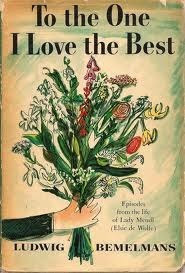 Ludwig Bemelmans (Viking)
Ludwig Bemelmans (Viking)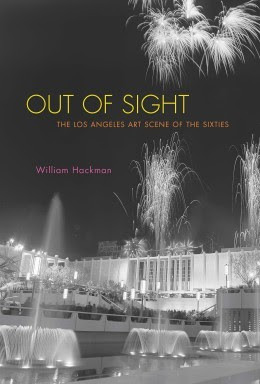 William Hackman (The Other Press)
William Hackman (The Other Press)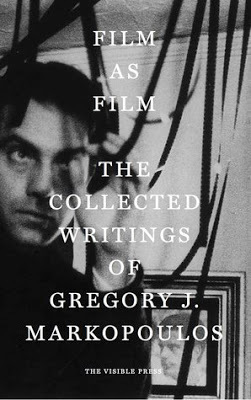 Mark Webber (The Visible Press)
Mark Webber (The Visible Press)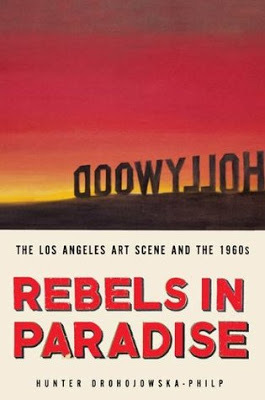 Hunter Drohojowska - Philp (Henry Holt)
Hunter Drohojowska - Philp (Henry Holt)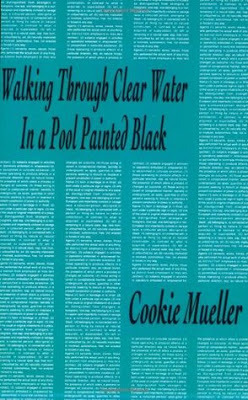 Cookie Mueller (Semoitext[e])
Cookie Mueller (Semoitext[e])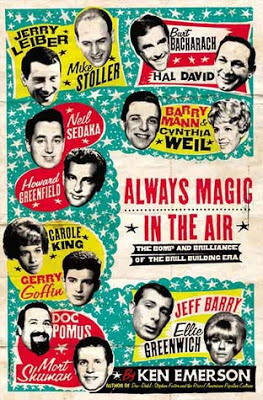 Ken Emerson (Viking)
Ken Emerson (Viking)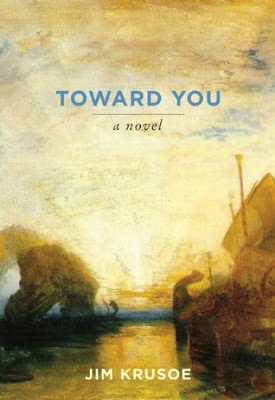 Jim Krusoe (Tin House Books)
Jim Krusoe (Tin House Books)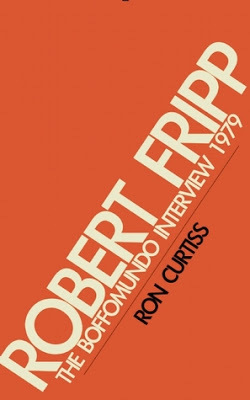 Robert Fripp (Rare Bird Books)
Robert Fripp (Rare Bird Books)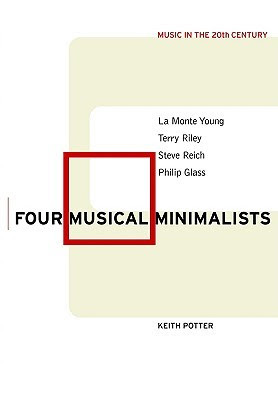 Keith Porter (Cambridge University Press)
Keith Porter (Cambridge University Press) Steve Reich (Oxford University Press)
Steve Reich (Oxford University Press)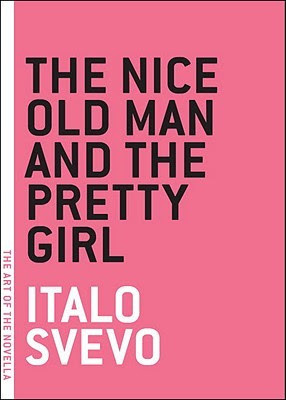 Italo Svevo (Melville House)
Italo Svevo (Melville House)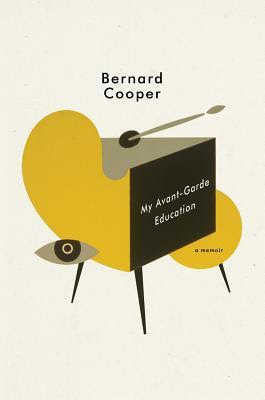 Bernard Cooper (W.W. Norton & Co.)
Bernard Cooper (W.W. Norton & Co.) Rachel Kushner (Scribner)
Rachel Kushner (Scribner)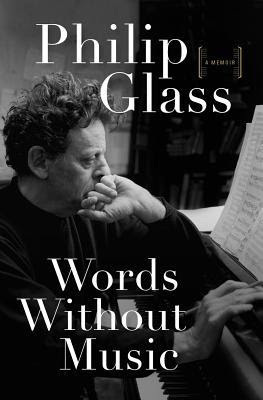 Phillip Glass (Liveright)
Phillip Glass (Liveright)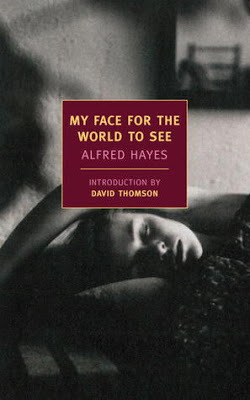 Alfred Hayes (NYRB)
Alfred Hayes (NYRB)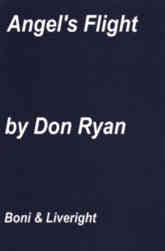 Don Ryan
Don Ryan F.T. Marinetti (Sternberg Press)
F.T. Marinetti (Sternberg Press)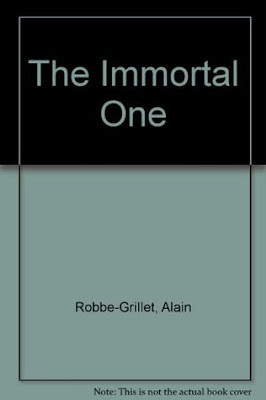 Alain Robbe-Grillet (Calder)
Alain Robbe-Grillet (Calder)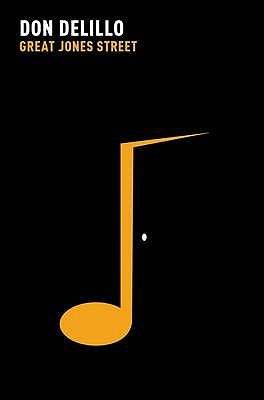 Don DeLillo (Picador USA)
Don DeLillo (Picador USA)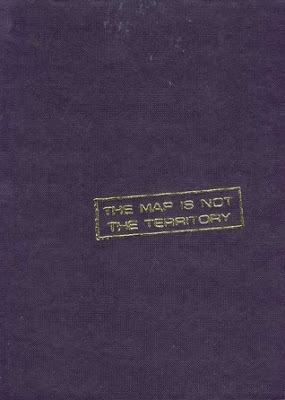 Ralph Rumney (Manchester University)
Ralph Rumney (Manchester University) Shinobu Hashimoto (Vertical)
Shinobu Hashimoto (Vertical)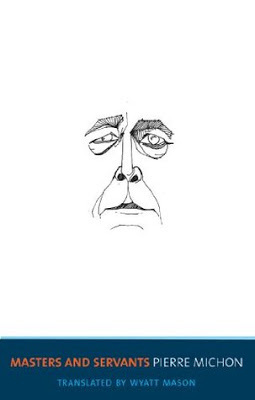 Pierre Michon (Yale University Press)
Pierre Michon (Yale University Press) Friedrich Reck (NYRB)
Friedrich Reck (NYRB)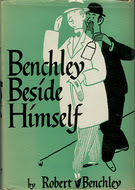 Robert Benchley (Ameron House)
Robert Benchley (Ameron House)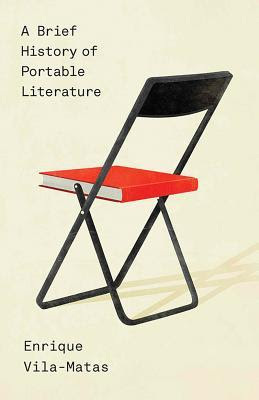 Enrique Vila-Matas (New Directions)
Enrique Vila-Matas (New Directions)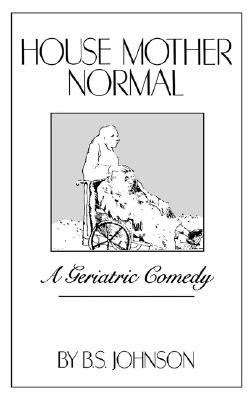 B.S. Johnson (New Directions)
B.S. Johnson (New Directions)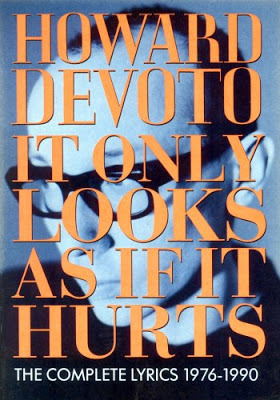 Howard Devoto (Black Spring Press)
Howard Devoto (Black Spring Press) Albertine Sarrazin (New Directions)
Albertine Sarrazin (New Directions)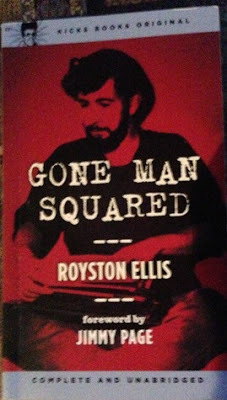 Royston Ellis (Kicks Books)
Royston Ellis (Kicks Books)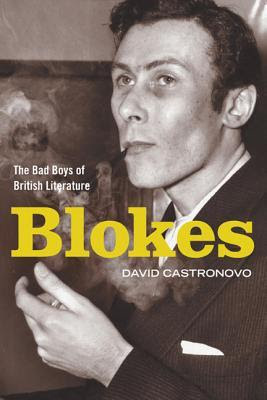 David Castronova (Continuum )
David Castronova (Continuum )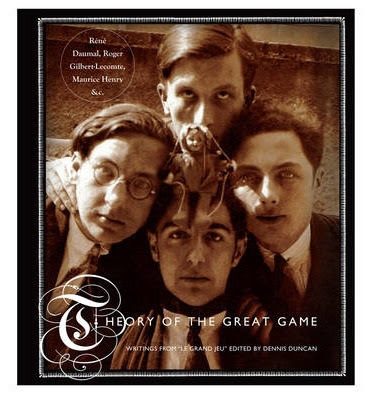 Dennis Duncan (Atlas Press)
Dennis Duncan (Atlas Press)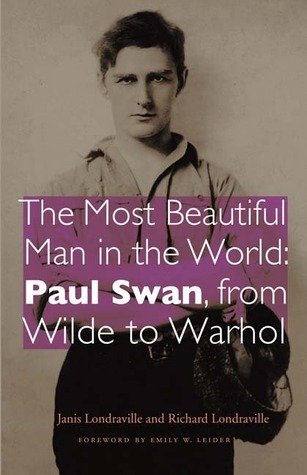
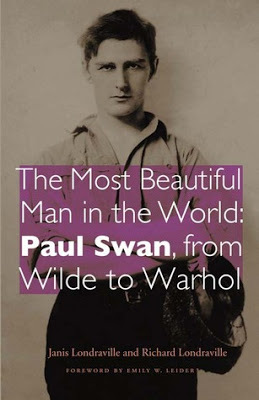 Janis Londraville & Richard Londraville (University of Nebraska Press)
Janis Londraville & Richard Londraville (University of Nebraska Press)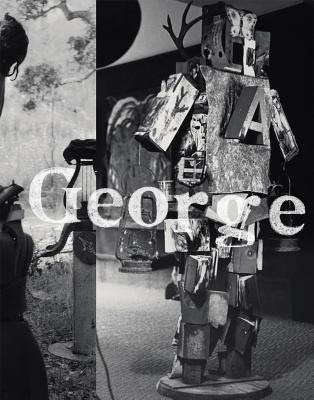 George Herms (Hamilton Press)
George Herms (Hamilton Press)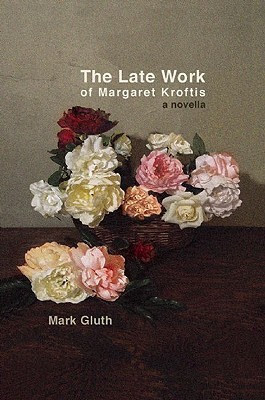 Mark Gluth (Akashic Books)
Mark Gluth (Akashic Books)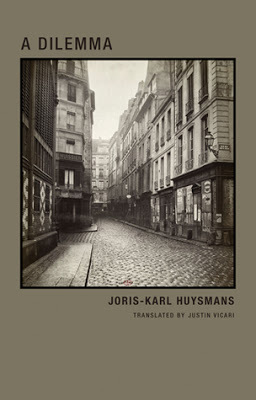 Joris-Karl Huysmans (Wakefield Press)
Joris-Karl Huysmans (Wakefield Press) Shigeru Mizuki (Drawn & Quaterly)
Shigeru Mizuki (Drawn & Quaterly)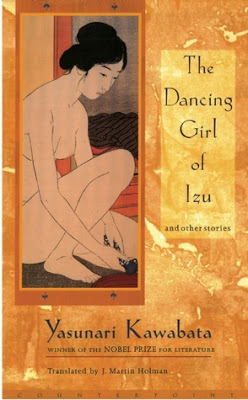 Yasunari Kawabata (Counterpoint)
Yasunari Kawabata (Counterpoint)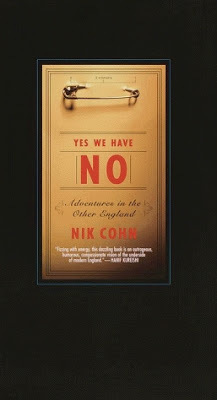 Nik Cohn (Knoph)
Nik Cohn (Knoph)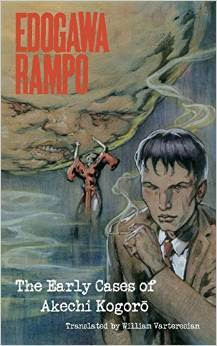 Edogawa Rampo (Kurodahan Press)
Edogawa Rampo (Kurodahan Press) Kenkō (Penguin)
Kenkō (Penguin) Ryūnosuke Akutagawa (Penguin)
Ryūnosuke Akutagawa (Penguin)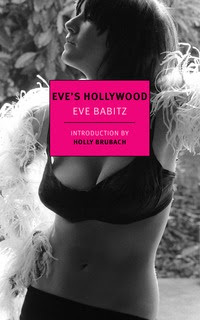 Eve Babitz (NYRB)
Eve Babitz (NYRB)
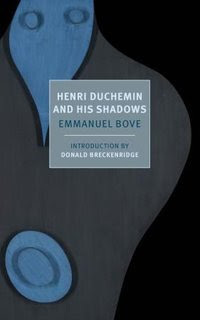 Emmanuel Bove (NYRB)
Emmanuel Bove (NYRB)
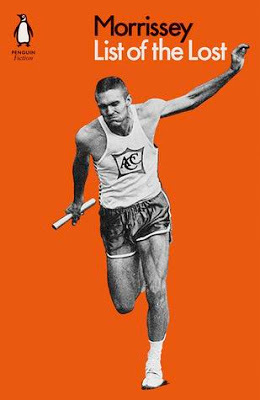 Morrissey (Penguin)
Morrissey (Penguin)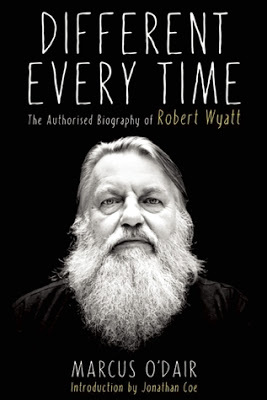 Marcus O'Dair (Soft Skull Press)
Marcus O'Dair (Soft Skull Press)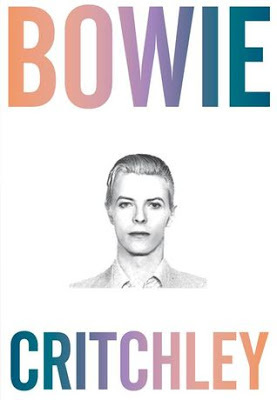 Simon Critchley (OR Books)
Simon Critchley (OR Books)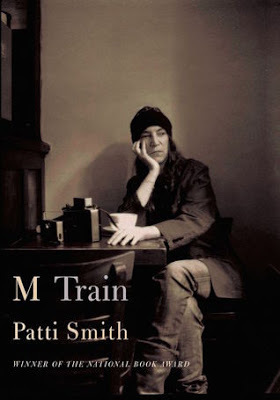 Patti Smith (Knoph)
Patti Smith (Knoph) Boris Vian (Black Widow Press)
Boris Vian (Black Widow Press)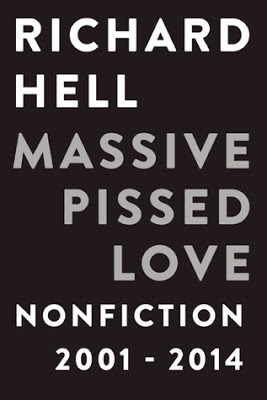 Richard Hell (Soft Skull Press)
Richard Hell (Soft Skull Press)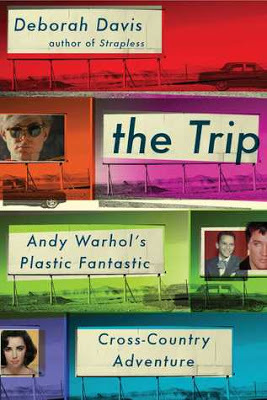 Deborah Davis (Atria Books)
Deborah Davis (Atria Books)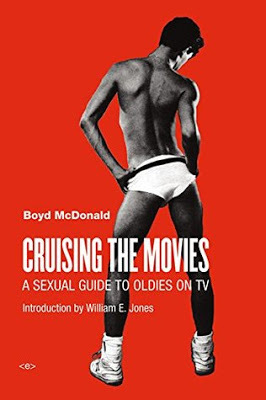 Boyd McDonald, Introduction by William E. Jones (Semoitext[e])
Boyd McDonald, Introduction by William E. Jones (Semoitext[e])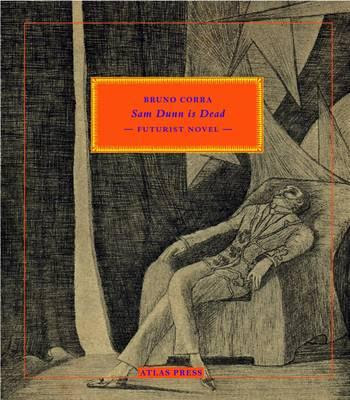 Bruno Corra (Atlas Press)
Bruno Corra (Atlas Press)
 Roland Barthes (Seagull Press)
Roland Barthes (Seagull Press)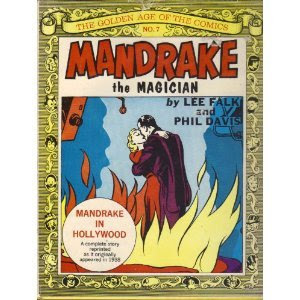 Lee Falk & Phil Davis (Nostalgia Press)
Lee Falk & Phil Davis (Nostalgia Press)
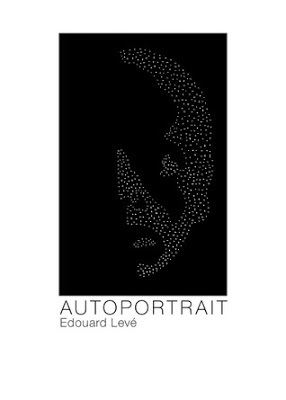 Edouard Levé (Dalkey Archive Press)
Edouard Levé (Dalkey Archive Press)
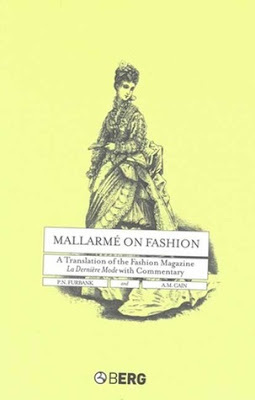 Stéphane Mallarmé (Berg)
Stéphane Mallarmé (Berg)
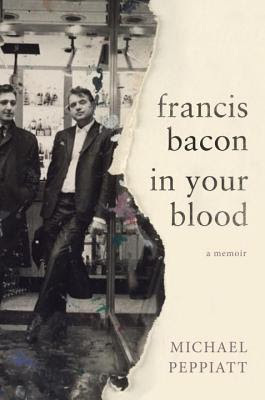 Michael Peppiatt (Bloomsbury)
Michael Peppiatt (Bloomsbury)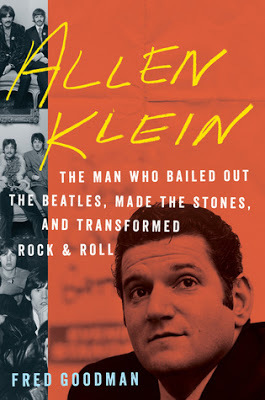 Fred Goodman (Eamon Dolan/Houghton Mifflin Harcourt)
Fred Goodman (Eamon Dolan/Houghton Mifflin Harcourt)
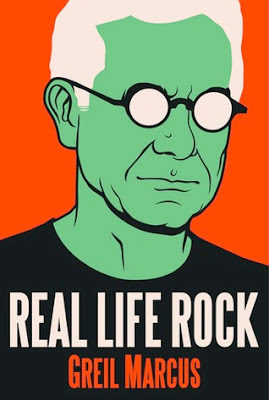 Greil Marcus (Yale University Press)
Greil Marcus (Yale University Press)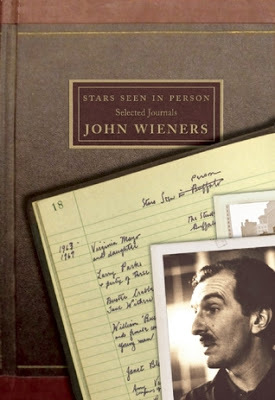 John Wieners (City Lights Publishers)
John Wieners (City Lights Publishers)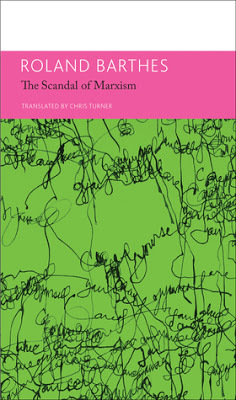 Roland Barthes (Seagull Books)
Roland Barthes (Seagull Books) Alexander Vvedensky (NYRB Poets)
Alexander Vvedensky (NYRB Poets)
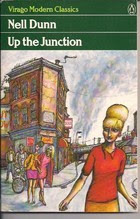 Nell Dunn (Virago)
Nell Dunn (Virago) Linda Rosenkrantz (NYRB)
Linda Rosenkrantz (NYRB) Brigid Berlin (Reel Art Press)
Brigid Berlin (Reel Art Press)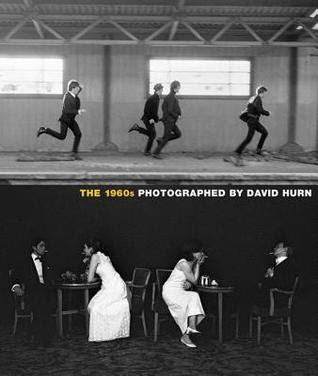 David Hurn (Reel Art Press)
David Hurn (Reel Art Press)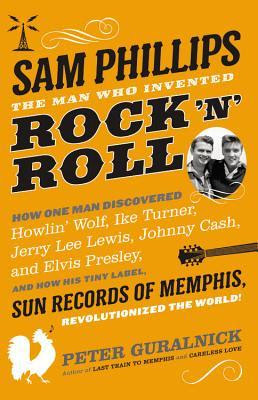 Peter Guralnick (Little Brown & Company)
Peter Guralnick (Little Brown & Company)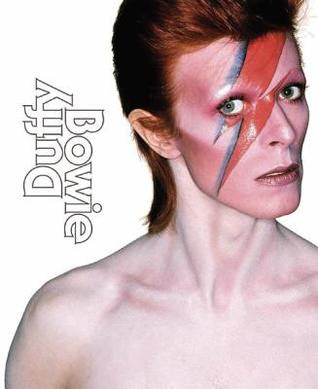 Duffy (ACC Distribution)
Duffy (ACC Distribution)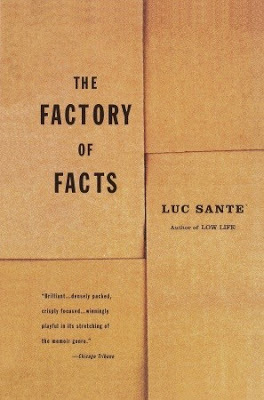 Luc Sante (Vintage)
Luc Sante (Vintage)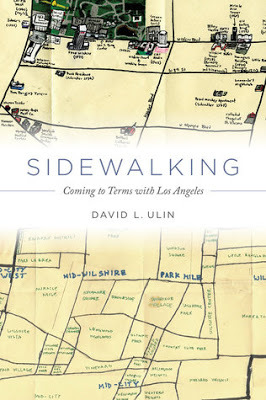 David L. Ulin (University of California Press)
David L. Ulin (University of California Press)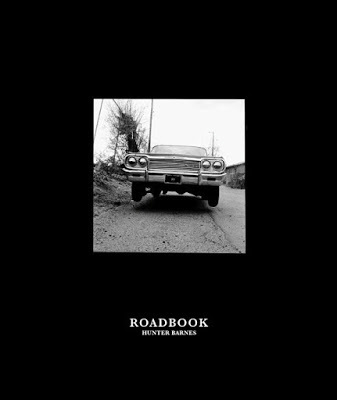 Hunter Barnes (Reel Art Press)
Hunter Barnes (Reel Art Press)
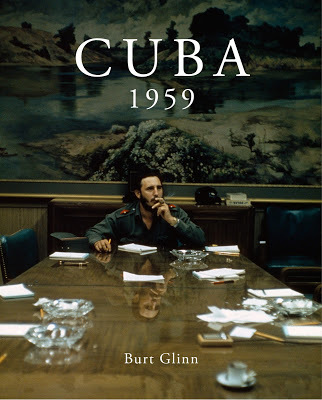 Burt Glinn (Reel Art Press)
Burt Glinn (Reel Art Press)To read the reviews of the above books, go here: https://www.goodreads.com/user_challenges/1926501
-- Tosh Berman
Published on December 14, 2015 11:15
December 13, 2015
The Sunday Series: Sunday December 13, 2015
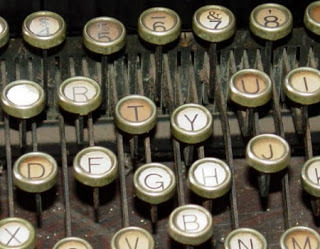
The Sunday Series:Sunday December 13, 2015
My job is to basically reflect on life, and unfortunately it doesn’t pay. I have a deep interest in the world around me, or how I see that world. To be perfectly honest the world can easily exist without any input by yours truly. Yet, I have known people, who wait to hear from me, before they enter such a world. My problem (and it is mine alone) is that I can’t get a regular paycheck for my writings on such an interesting landscape as what is out there. “There” being whatever is not within my world.
My ‘world’ is one where I take long baths and focus my thoughts on the bathroom wall. I notice the cracks in the wall, and I immediately think of them as examples of deep distress that is around me, but quite honestly, not in the bath with me. The bath is a no-zone. My sense of being is how hot the water is, and is there enough shampoo in the bottle? Other than that, the crack on the tiled wall is my total concentration on what that scar means to me.

Due to my poor eyesight, the crack has many dimensions attached to it. I often think of it as an island among the blue sea, since my bathroom tiles are in that color. What is the consistency that makes such an image to be so profound? I imagined Commander Perry as he approached Japan’s little island, Izu Ōshima, in 1854, that is two hours away from Tokyo on a jet boat, but still, such a remote island. It has an active volcano, and five restaurants on that island that if full of abandoned cats. What one would think of as a stalled car engine is actually a wave of sound of cats’ purring in unison. Feline’s urine can be smelled in the exotic landscape on the island. Houses left abandoned and the numerous monuments for people who had either died due to plane failure or landslides are scattered in the most remote and public areas on Ōshima. I loved the island, because the intense rains served my mood perfectly. Almost as good as being in my bathtub looking at the island of Izu Ōshima on my blue tile.

The words I write are as useless as the soap bubbles from my shampoo as it mixes in with the bath water. They too become islands in the sea of Tosh’s bath water. Real depression hits me when I undo the drain and watch the water empty into a pipe that leads to a filthy sewer. Whatever happens, there is always the sewer. No one can lie to that space, because I think the stink and filth is very much part of our DNA.
I dry myself, put some cream on my face (to even out the worry lines on my forehead and mouth area) and then I dress very carefully. First the underwear, then the socks, a stripped t-shirt (since it’s Sunday, I choose a navy blue strip against white) and a sensible pair of walking shoes. I then approach my MacBook Air, and try to enter into the adventure.
Published on December 13, 2015 12:21
December 8, 2015
"Cuba 1959" by Burt Glinn (Reel Art Press) Edited by Michael Shulman and Tony Nourmand
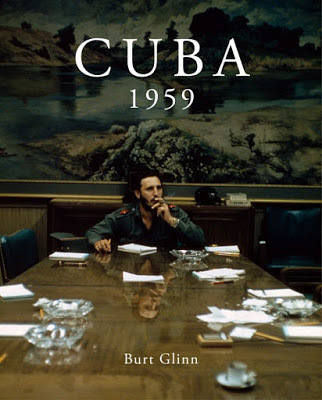 ISBN: 978-1-909526-31-0 Reel Art Press
ISBN: 978-1-909526-31-0 Reel Art Press"Cuba 1959" by Burt Glinn
For a lot of Americans, the word 'Cuba' brings either a sense of great anger, or adventure. Photographer and member of the Magnum Photos group, Burt Glinn, went to Cuba the day the revolution happened. When covering a story or incidents that is happening at that moment, a photographer must be part of that moment. If they lost the moment, then they don't have their photograph. Glinn, I suspect, is a man who always has his moment, and he will capture it. He surely did in Havana, 1959.
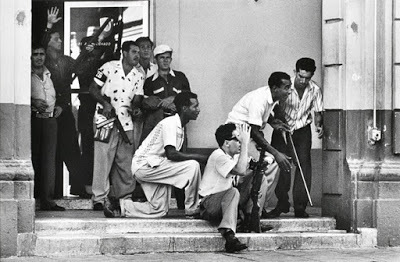 Photograph by Burt Glinn
Photograph by Burt Glinn"Cuba 1959" is very much a photo-journalistic narration and the beauty of this book is not the fact that Glinn was behind the scenes, but actually in the crowd. So, his point-of-view is from the public and what they saw in those series of days around January 1, 1959. It's amazing that the photographer on December 31, 1958 was at a black-tie party in New York City when he heard the news that Cuban dictator Fulgencio Batista had fled Cuba. By next morning, Glinn was in Havana.
Beautifully edited, the book lays out a narrative where Glinn starts his work as soon as he landed in Havana. The one thing that really struck me, was how handsome and beautiful the Cuban people are. They're incredibly chic! The Revolutionaries and Castro himself is a good-looking group of guys. Whatever this by design or happenstance, it almost looks like a fashion shoot, instead of a battle on a Havana street. The architecture as well, although in the background of these photos, is magnificent in itself. For those who are interested in Cuban style, this book is for you. But with bullets and upheaval.
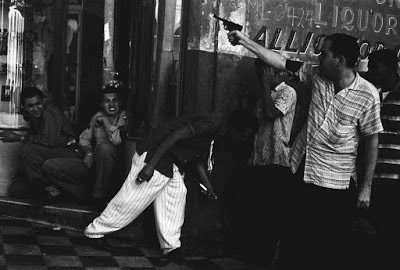 Photograph by Burt Glinn
Photograph by Burt Glinn"Cuba 1959" is not a political book, but a document of things that happened in the early days of 1959. What happened afterwards can be debated, but this book is not about that debate. What this book is about is a series of moments, where a change took place. And change for the moment, is usually the best. Tomorrow or later, that is another question all together. Gillian is a superb photographer. Although I never been to Cuba, I can feel the presence of the city and its architecture through this book. A classic.
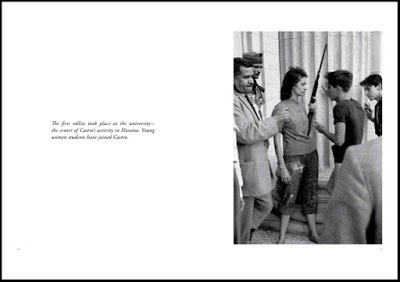 Book layout : art direction and design by Joakim Olsson
Book layout : art direction and design by Joakim Olsson- Tosh Berman
Published on December 08, 2015 15:32
"Cuba 1959" by Burt Glinn (Reel Art Press) Edited by Michael Schulman and Tony Nourmand
 ISBN: 978-1-909526-31-0 Reel Art Press
ISBN: 978-1-909526-31-0 Reel Art Press"Cuba 1959" by Burt Glinn
For a lot of Americans, the word 'Cuba' brings either a sense of great anger, or adventure. Photographer and member of the Magnum Photos group, Burt Glinn, went to Cuba the day the revolution happened. When covering a story or incidents that is happening at that moment, a photographer must be part of that moment. If they lost the moment, then they don't have their photograph. Glinn, I suspect, is a man who always has his moment, and he will capture it. He surely did in Havana, 1959.
 Photograph by Burt Glinn
Photograph by Burt Glinn"Cuba 1959" is very much a photo-journalistic narration and the beauty of this book is not the fact that Glinn was behind the scenes, but actually in the crowd. So, his point-of-view is from the public and what they saw in those series of days around January 1, 1959. It's amazing that the photographer on December 31, 1958 was at a black-tie party in New York City when he heard the news that Cuban dictator Fulgencio Batista had fled Cuba. By next morning, Glinn was in Havana.
Beautifully edited, the book lays out a narrative where Glinn starts his work as soon as he landed in Havana. The one thing that really struck me, was how handsome and beautiful the Cuban people are. They're incredibly chic! The Revolutionaries and Castro himself is a good-looking group of guys. Whatever this by design or happenstance, it almost looks like a fashion shoot, instead of a battle on a Havana street. The architecture as well, although in the background of these photos, is magnificent in itself. For those who are interested in Cuban style, this book is for you. But with bullets and upheaval.
 Photograph by Burt Glinn
Photograph by Burt Glinn"Cuba 1959" is not a political book, but a document of things that happened in the early days of 1959. What happened afterwards can be debated, but this book is not about that debate. What this book is about is a series of moments, where a change took place. And change for the moment, is usually the best. Tomorrow or later, that is another question all together. Gillian is a superb photographer. Although I never been to Cuba, I can feel the presence of the city and its architecture through this book. A classic.
 Book layout : art direction and design by Joakim Olsson
Book layout : art direction and design by Joakim Olsson- Tosh Berman
Published on December 08, 2015 15:32



